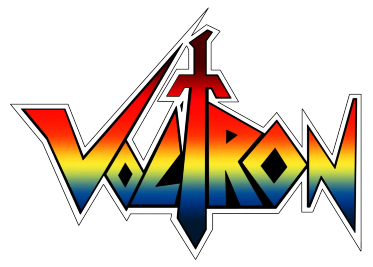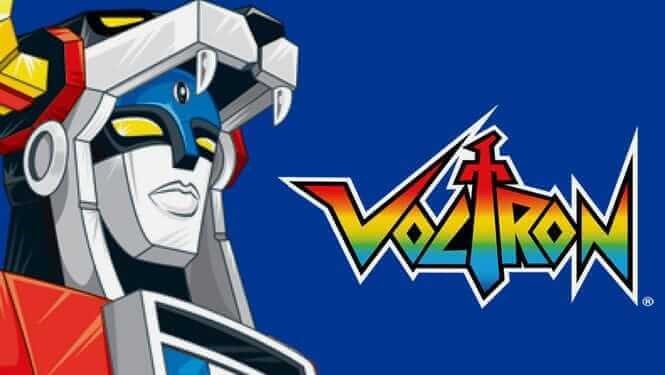Movie News
When Did Voltron Come Out? A Journey Through the Iconic Series
The animated series Voltron has become a significant cultural phenomenon since its debut, captivating audiences worldwide with its action-packed narrative, compelling characters, and innovative animation. In this article, we will explore the history of Voltron, its various adaptations, and its cultural significance, answering the key question: When did Voltron come out?
The Origins of Voltron: A Fusion of Japanese Anime and American Creativity
Voltron was first introduced to American audiences on September 10, 1984. The series was the result of a collaboration between World Events Productions (WEP) and the Japanese animation studio Toei Animation. The American version of Voltron was adapted from two different Japanese anime series: Beast King GoLion and Armored Fleet Dairugger XV. This blending of Japanese animation with American storytelling techniques was innovative for its time and helped Voltron stand out among other animated series of the 1980s.

Beast King GoLion, which debuted in Japan in 1981, was the primary source for the Voltron series that most fans are familiar with, known as Voltron: Defender of the Universe. The story centers around five pilots who control robotic lions, which combine to form the mighty robot Voltron. This concept of combining mecha was already popular in Japanese anime, but Voltron introduced it to a broader audience, particularly in the United States, where it quickly gained a dedicated following.
The Evolution of Voltron: From the 1980s to Today
Since its debut in 1984, Voltron has undergone several reboots, adaptations, and expansions. Each iteration has added new layers to the lore and attracted new generations of fans.
- Voltron: Defender of the Universe (1984-1985): The original series remains the most iconic version of Voltron. With its engaging storyline, memorable characters, and groundbreaking animation, it became a cultural icon of the 1980s. The series ran for two seasons, with a total of 124 episodes, and was accompanied by a range of merchandise, including action figures, comic books, and video games.
- Voltron: The Third Dimension (1998-2000): In the late 1990s, Voltron was revived with a new CGI series titled Voltron: The Third Dimension. This series aimed to update the original story for a new generation while retaining the core elements that made Voltron a beloved franchise. Although it did not achieve the same level of success as the original, it introduced Voltron to a new audience and kept the brand alive during a time when interest in the original series was waning.
- Voltron Force (2011-2012): Another reboot came in the form of Voltron Force, which aired on Nickelodeon. This series served as a sequel to the original Defender of the Universe series and introduced a new team of pilots alongside the original characters. While it was short-lived, Voltron Force helped maintain interest in the franchise, setting the stage for future adaptations.
- Voltron: Legendary Defender (2016-2018): Perhaps the most successful reboot of Voltron came with the Netflix series Voltron: Legendary Defender. This series reimagined the original story with updated animation, deeper character development, and a more complex narrative. It quickly gained a large fanbase and received critical acclaim for its storytelling, voice acting, and animation quality. Voltron: Legendary Defender ran for eight seasons, solidifying Voltron as a franchise that could successfully evolve with the times.
The Cultural Impact of Voltron: A Legacy That Endures
Voltron has left an indelible mark on pop culture, influencing not only the world of animation but also broader entertainment media. When the series debuted in the 1980s, it introduced a new concept to Western audiences: the idea of combining robots to form a more powerful entity. This concept, known as the “super robot” genre, had already been popular in Japan through series like Mazinger Z and Getter Robo, but Voltron was the first to bring it to a mainstream global audience. The show’s success significantly boosted the popularity of this genre worldwide, leading to an explosion of similar series and characters that echoed Voltron‘s themes.

The impact of Voltron on the super robot genre cannot be overstated. By making the idea of combining mecha appealing to children and young adults in the West, Voltron helped solidify the genre’s place in global pop culture. The iconic image of the five lions merging to form the mighty Voltron became a defining moment in animation history and a symbol of the power of teamwork and unity. This visual and thematic innovation inspired countless other series, both in Japan and internationally, where the concept of “together we are stronger” became a recurring theme in both animated and live-action narratives.
Moreover, Voltron‘s success extended far beyond the screen. The series was a pioneer in the realm of merchandising, demonstrating the immense revenue potential for animated series through the sale of toys, games, clothing, and other products. The Voltron brand quickly became a merchandising juggernaut, with its lion and robot figures becoming must-have items for children in the 1980s. The widespread popularity of these products not only fueled the show’s success but also set a precedent for how animated series could be monetized. This model has since become standard in the industry, with modern franchises like Transformers, Pokémon, and Star Wars following in Voltron‘s footsteps by creating extensive product lines that complement their media offerings.
Today, Voltron remains a beloved franchise with a loyal fanbase that spans multiple generations. Its impact can be seen in the countless homages, parodies, and references in other media, as well as in the ongoing popularity of its various reboots and adaptations. Voltron‘s enduring legacy is a testament to the power of great storytelling, compelling characters, and the ability of animation to cross cultural boundaries and unite audiences around the world. As new generations discover the magic of Voltron, its influence on pop culture and the entertainment industry will undoubtedly continue to grow, ensuring that Voltron remains a cultural icon for many years to come.
Voltron’s Place in Animation History
As we look back at the history of Voltron, it’s clear that the series’ debut on September 10, 1984, was just the beginning of a long and successful journey. This iconic series has not only become a staple in the world of animation but also a symbol of innovation and adaptability in the entertainment industry. Voltron has continuously evolved, embracing new storytelling techniques, artistic styles, and technological advancements while staying true to the core elements that made it a beloved franchise from the outset.

The original Defender of the Universe series marked a significant shift in the way animated series were produced and consumed. During the 1980s, Voltron stood out with its unique blend of Japanese anime aesthetics and Western storytelling, which was relatively new to American audiences at the time. The show’s ability to merge these two distinct styles created a hybrid form of entertainment that resonated with viewers across the globe. This successful fusion of cultures laid the groundwork for future collaborations between Japanese and Western studios, ultimately contributing to the globalization of anime.
As the series progressed, each subsequent iteration of Voltron reflected the changing landscape of animation. The shift from traditional hand-drawn animation in the original series to the CGI utilized in Voltron: The Third Dimension showcased the industry’s transition towards digital techniques. Though the CGI of the late 1990s may seem primitive by today’s standards, it was a bold move that demonstrated Voltron’s willingness to embrace emerging technologies. This adaptation to new methods of animation ensured that the series remained relevant and appealing to a new generation of viewers.
The storytelling in Voltron also evolved over time, adapting to the expectations of contemporary audiences. While the original series focused on straightforward narratives and episodic adventures, later versions, such as Voltron: Legendary Defender, introduced more complex story arcs, deeper character development, and themes that resonated with modern viewers. This shift reflected a broader trend in animation, where audiences began to demand more sophisticated content, even from shows that were originally designed for children.
In addition to its influence on other media, Voltron has also played a crucial role in the expansion of the anime market in the West. At a time when Japanese anime was still a niche interest in the United States, Voltron helped bridge the gap between Eastern and Western audiences. Its success paved the way for other anime series to be localized and distributed in the West, contributing to the growing popularity of anime worldwide. Today, Voltron is often credited as one of the pioneering series that introduced a generation of viewers to the world of Japanese animation.
The legacy of Voltron is further evidenced by its enduring fanbase. Decades after its original release, Voltron continues to attract new fans while retaining the loyalty of those who grew up watching the series. Fan conventions, online communities, and merchandise sales all point to the lasting impact of Voltron on popular culture. This enduring appeal is a rare achievement in the fast-paced world of entertainment, where trends often come and go with little lasting impact.
From the original Defender of the Universe to Legendary Defender, Voltron has remained a beloved icon in the world of animation. Its ability to adapt to changing tastes and technologies while maintaining its core identity has ensured that Voltron will continue to be celebrated for years to come. As we continue to explore new frontiers in animation, the lessons learned from Voltron’s journey—about innovation, collaboration, and the power of storytelling—will remain relevant and inspiring.
When Did Voltron Come Out? A Journey Through the Iconic Series
Voltron may have come out in 1984, but its impact has been felt for decades. The series has evolved, rebooted, and expanded, maintaining a presence in popular culture and continuing to inspire fans around the world. Whether you’re a longtime fan who watched the original series or a newcomer introduced through Legendary Defender, the legacy of Voltron is one that spans generations, showcasing the timeless appeal of this iconic giant robot.
Let’s explore the answers When Did Voltron Come Out? in the article below from Alibaytoon Store. Whether you’re looking to reminisce about the classic series or discover the newest iteration, Voltron‘s history is a testament to the enduring power of great storytelling and innovative animation.
